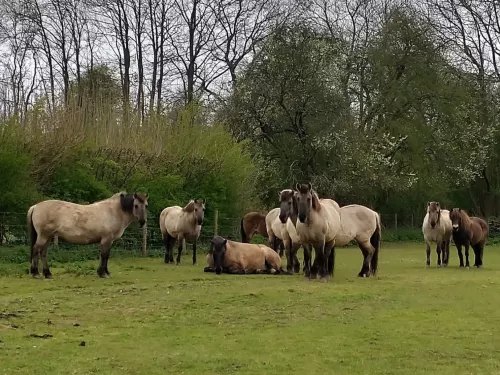
Voldemort's herd
Head of the herd is Voldemort, a dark lord of horses...
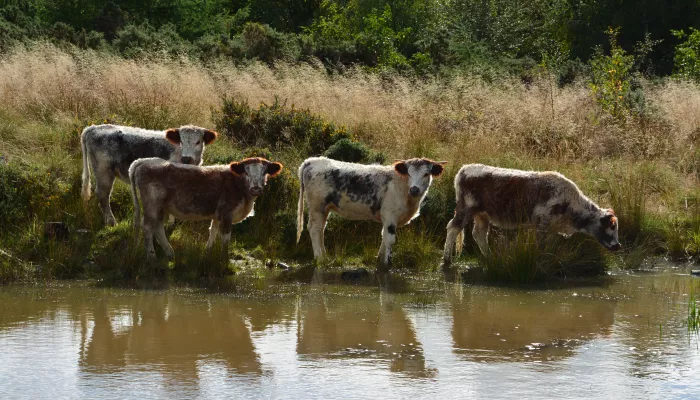
Our ground-breaking Wilder Grazing Strategy supports the nature-positive management of our estates, encouraging wildlife recovery and adaptation to the changing climate. Meet some of the amazing animals that support our work.
Kent Wildlife Trust is utilising mixes of old breeds of grazing, browsing and rootling animals across all habitats to mimic natural processes. The grazing species on our reserves act in similar ways to the large grazers that used to live wild in Kent but are now extinct, such as auroch, elk and bison.
When used as a conservation tool alongside deer and wild boar, they have an almost symbiotic relationship with their surroundings.
Remember to behave responsibly on reserves and keep a minimum 10m distance from grazing animals to support our work and help wildlife recovery in Kent.
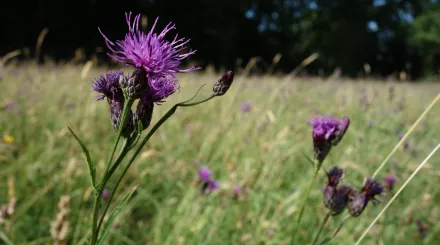
Saw-wort ©Wendy Carter

Head of the herd is Voldemort, a dark lord of horses...

Living their best life surrounded by lots of grass.
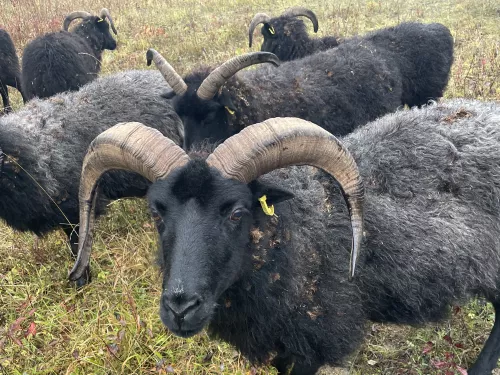
This lovable clan migrate around several reserves throughout the year led by their leader, Skittles.
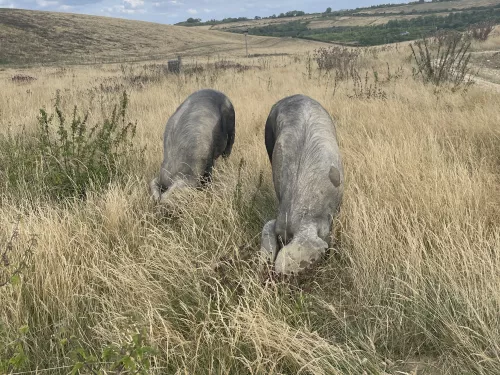
Meet the natural ploughs of the wild.
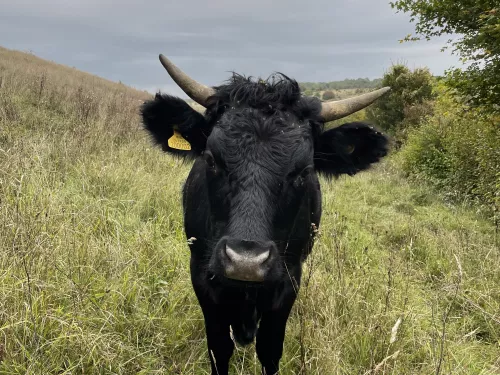
Miniature cows originally bred to live inside (and heat up) houses with some very big personalities.
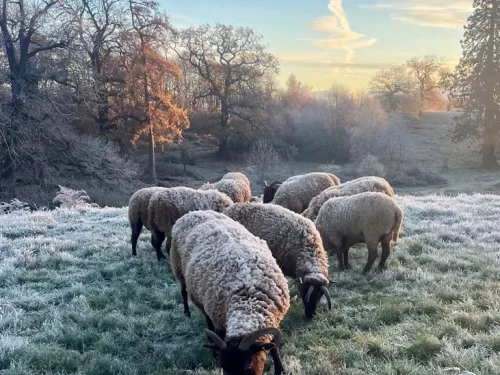
Meet the leader - the horns of doom to any nettle that stands in his way.
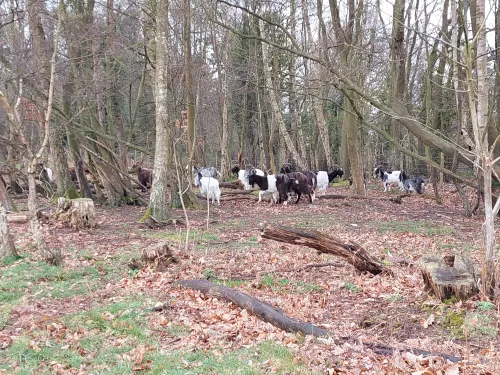
Goats chomping through the chestnut on an iron age hill fort.
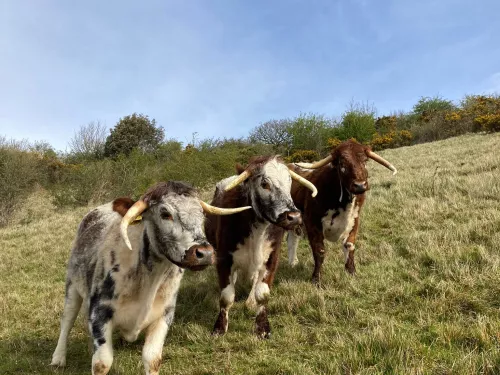
Our longhorn cattle are a beautiful British breed with unique markings and horns.
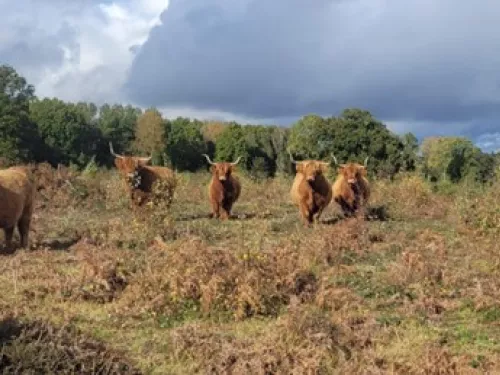
Meet the Highland cows that are part of our crucial Wilder Grazing programme

A result of Sussex and Angus parentage, these animals share the excellent temperaments of two breeds
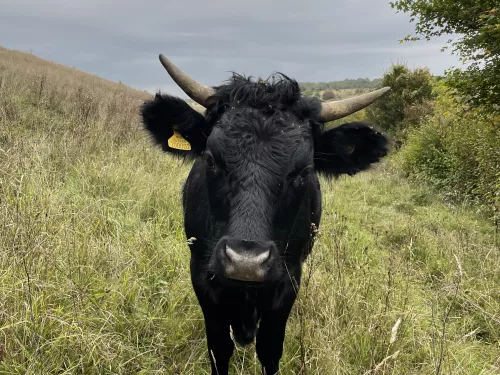
A small cow, tough and hardy with short pointy horns.
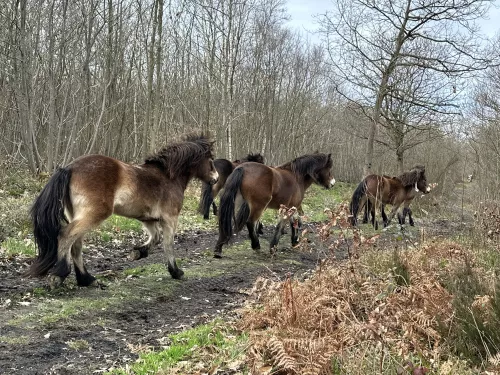
Find out about Exmoor ponies and why we use them in conservation.
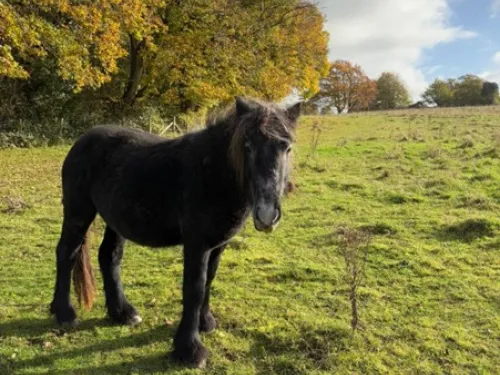
Fell ponies are native to Cumbria in the Northwest of England. They were bred for their strength to climb steep slopes and scale rocky terrains whilst hauling heavy machinery and goods. Their thick coats and manes help to protect them from strong winds…
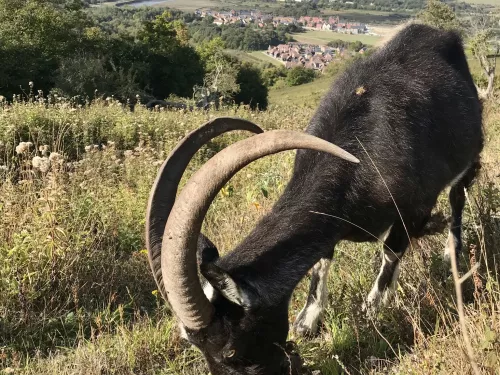
Coming in a wide range of sizes, colours and patterns, with an array of horn sizes and shapes, these goats are perhaps the ideal conservation animal.

An all-black compact mountain sheep with a taste for bramble and young scrub.

Resident of the Cumbrian fells for hundreds of years, this hill breed is the backbone of our sheep flocks.
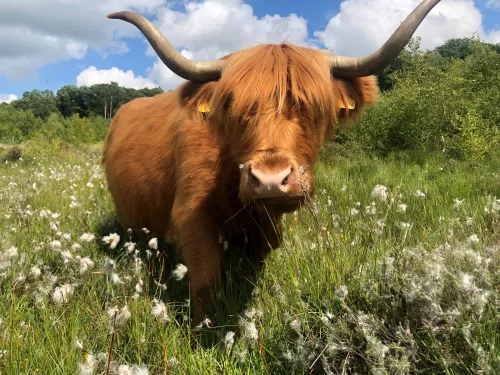
Highland cows with their distinctive long horns and flowing coats are the unsung heroes of nature conservation.
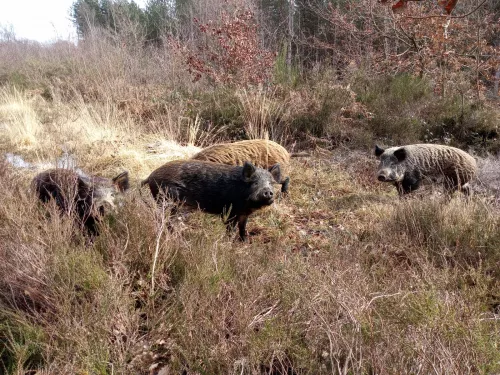
These pigs are as close as you can get to the wild boar and also, despite being a domesticated version of this wild species, share many of its traits.
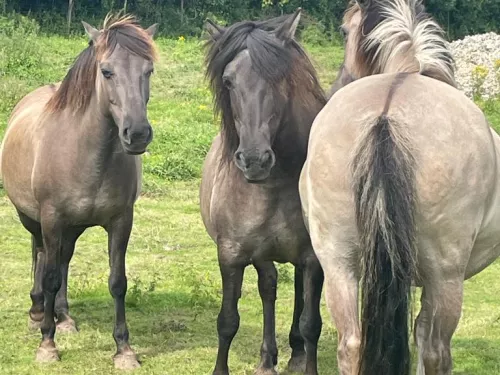
Konik ponies are one of the largest of the ‘pony’ breeds, often the size of a horse. 'Konik' literally means small horse. They are domestic ponies, bred over 100 years to live in the wild for conservation purposes.

This pig breed is becoming popular with smallholders and free range farmers. Despite their large size, large black pigs are often friendly and placid.
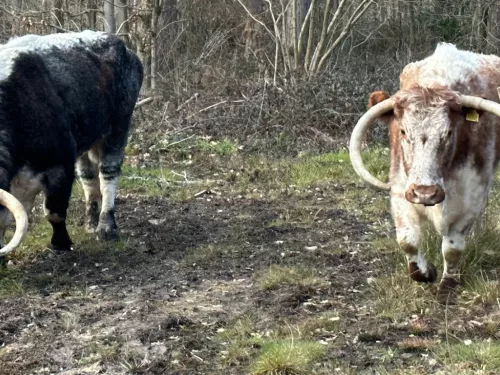
Longhorn cattle can be many colours but they are almost always brindle (splattered/stripey) with a white line down the spine. They have long backs and can have very impressive horns.
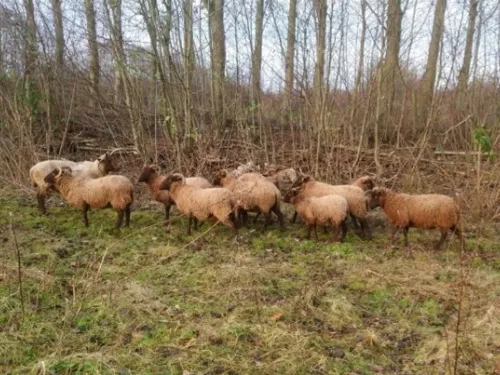
A striking unusual milky coffee coloured-sheep, often with four horns and sometimes as many as six. This primitive breed is originally from the Isle of Man. Their fleece self-sheds but they can also be shorn.
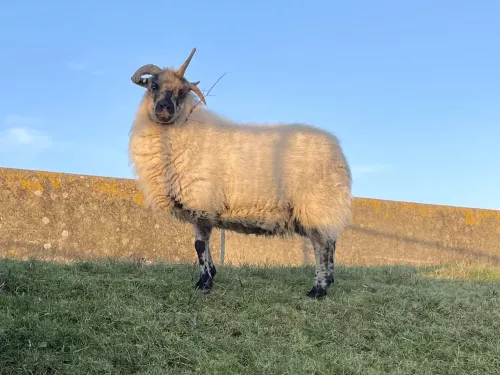
Similar to both the Hebridean sheep and the Manx, this is a compact, fine boned mountain sheep that can have two or four horns. Unlike our other two breeds of mountain sheep, Shetland sheep come in a wide variety of colours, so you will see cream and…
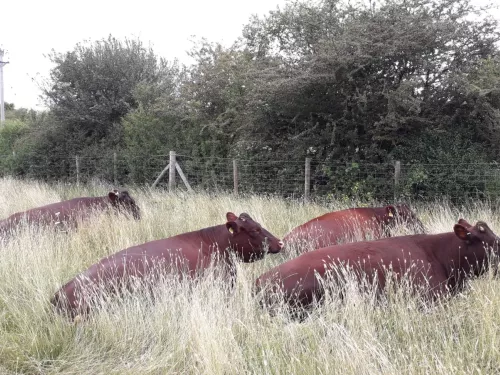
A richly red breed of cow specifically suited for the wet, woody ground of the Kent and Sussex Weald.
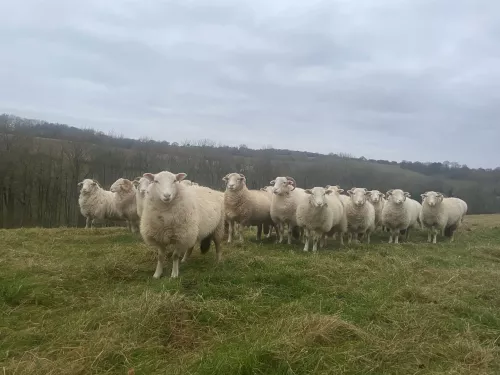
The story goes... they were bred by the Romans to take with them on their marches across the countryside so had to be strong, long-legged and happy to browse on whatever was available as they covered the length and breadth of the countryside.
We have a unique reference table that we always use as a starting point, depending on the aims of the site. The knowledge in this table has been gathered from over 150 years of collective experience of our staff, across a multitude of habitats, and from other conservation organisations that have been working on similar projects for the last 20 years or more.
Although using machinery can be a quick and cheap way to create habitat structure, it doesn't do all the other things that livestock do e.g. dunging, bark rubbing, hosting seeds and insects, fur loss.
Animals can also be much more precise in their work than a machine which tends to excel at straight lines and uniform heights, compared to the mixed mosaic pattern created by animal actions.
Read more about an example of this in our April Blog, Pigs and Wildflowers.
There is a phrase, ‘It’s not the cow, it’s the how’.
Cows have been part of our ecosystems for thousands of years. The climate and biodiversity crises are much more recent (since the industrial revolution).
Cows at natural levels in the environment can support increased nutrient cycling (meaning more carbon is stored in the soils of a grazed grassland than an ungrazed one). They also increase biodiversity by keeping habitat structure mixed, providing a wide range of food and shelter for wildlife.
However, when cows are in intensive systems with lots of food imported into them, and lots of chemical fertilisers, pesticides and antibiotics used to turn them into food for us, that is when they become bad for the environment. The same can be said for all species we use in conservation grazing. Horses, sheep and pigs also create significant environmental harm when kept in artificial and intensive systems.
Kent Wildlife Trust owns 650 - 800 animals of 17 different breeds and species, including cattle, sheep, goats, ponies, pigs, and water buffalo. Take a look at our breed profiles above to see which animals we use and why.
We own most of the grazing animals but, on some sites, we work with local farmers and graziers who do our grazing for us. We give them a grazing license which helps to ensure that the site gets the best possible grazing management. In many cases, these are big, grassy sites that need lots of grazing to keep them good for wildlife, and we don’t have enough animals to do that work.
We have four herds of highland cattle at the moment: one based at Sandwich and Pegwell Bay, one based in Dover, one at Heather Corrie Vale and one in Ashford. Contact us ([email protected]) for the most up-to-date locations of our herds.
We do lots of the same things. We have to undertake all the same legal testing, paperwork and welfare care. We breed our own animals. Sometimes we even use the same breeds. Many farmers are now managing their land in ways that are better for wildlife than they were.
There are two main differences:
We graze at very low stocking rates over a wide variety of habitats with old-fashioned breeds.
We might have 10 small hill sheep on 5 ha of grassland, scrub and woodland, whereas a 5ha livestock farm field might have 100 large lowland sheep on it. The way we do it is often uneconomical because the animals grow slower, it can often take longer to do daily welfare checks and it’s harder to catch them if they need treatment.
We also select our animals primarily for temperament rather than size or shape. Almost all our animals are on public sites so we need to make sure that they are relaxed around people. We don’t need to make money from them, so if they don’t breed or aren’t the best shape for meat or milk, for instance, we don’t mind, as long as they are well-behaved and in tune with the habitat.
We do use some local breeds such as the Sussex cattle, however many modern breeds have been encouraged to be over-reliant on grass for their diet. Grasslands make them grow faster than heathland, woodland or downland habitats do. This is great for farmers but we are looking for old-fashioned breeds that are still connected to the wider landscape. These tend to be the upland and mountain breeds that have continued to survive in more natural landscapes, rather than the lowland breeds that now rely more on high-energy foods in lowland grass meadows and flood plains to do well.
Where we have sites that are suitable for lowland breeds, we often use local farmers with those breeds to do the grazing for us, so we can focus on supporting the less popular breeds to work in more difficult habitats.
Yes. Some of our breeding animals come in for short periods of time to have their babies safely and we take sick or injured animals indoors sometimes to treat them.
Other than for the above reasons, our animals stay out all year round. All of our wilder grazing breeds naturally grow warmer coats for the winter, from the famous double coats of the Highland cows, to the thicker, longer hair on the pigs. Exmoor ponies also have specific traits like the area around their eyes and tails that encourages rain to run away from sensitive areas.
Animals use habitats and graze plants in different ways at different times of year, so year-round grazing is an important component of Wilder Grazing.
It is most likely that they have moved to a different site to do work there. Some habitats only need grazing at certain times of year and some sites are too small to hold a herd or a flock year-round. Where possible, we like to bring the same animals back each year as animals that know a space work better in it than those who don’t.
Sometimes we change the type of animal on site to help with parasite burdens. Mixed grazing is a natural way in which animals in the wild have a reduced worm burden compared to large groups of one type of animal.
A few are sold each year for various reasons and the income goes a small way towards the cost of the herd’s care.
We have a 24-hour emergency phoneline for livestock that are ill, injured, escaped or at risk of escape: 07796 171 499.
For any non-emergency questions or queries, please contact [email protected]
Whenever you are in the countryside, it is important that you keep a safe distance from all large animals. We recommend 10m as a minimum. This is the distance at which our large animals will be able to continue their natural behaviour without feeling pressure from you (other people’s animals may need a greater distance). If in any doubt, give as much distance as you can.
All the large breeds we use have a history of living with people. Sussex and longhorn cattle were used to pull ploughs, Dexters were the original ‘house cow’ – small enough to fit in a house. Koniks worked on farms, and Fell ponies hauled goods over the mountains of Cumbria. This history of living closely with people means that the breeds tend to be calmer and more relaxed around people and the weird things we do (in their minds).
Our animals are also temperament-tested before they go out onto a public site.
Our home-bred animals are introduced to the things they will see out on reserves for about a year once they have left their mums before going out onto sites with the public on them.
Adult animals we buy in are checked for temperament before they are bought and are held for at least two weeks before going into public spaces. Once out, they are checked every day by our trained staff and volunteers who report any changes in behaviour. On the very rare occasion that one of our animals shows any unprovoked aggression, they are immediately removed from our herds.
All of our animals have a daily welfare check carried out by our amazing team of volunteers and staff. They are supported by dedicated key staff and a specialist grazing manager who has a huge amount of experience with commercial stock management, health, care, nutrition and breeding. This takes care of their physical health to a high standard.
Consideration of mental health and wellbeing has also made progress in the animal world. Allowing our animals to remain in stable family-type groups, giving them free choice in food, shelter and friendship bonds, and allowing them to behave as naturally as possible with minimal human interactions are all things that we know are extremely good for mental health. Allowing the animals to be themselves and have choices is important for them, just as it is for us and this is the cornerstone of the Wilder Grazing approach.
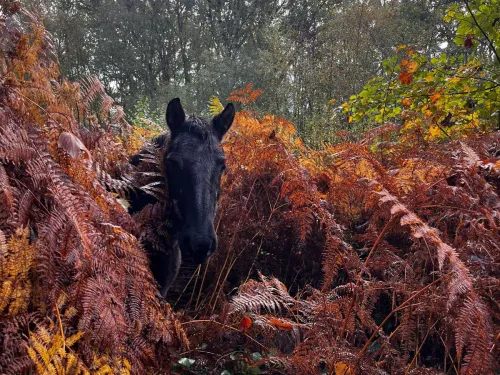
Koniks (sometimes referred to as Konik Polski) are a non-native primitive breed that originate from Poland. They are a descendant of the tarpan, a type of European wild horse that went extinct in the 19th century. They have been bred for almost 80 years…
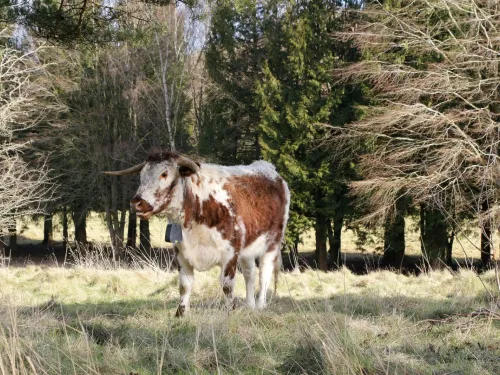
Wilder Grazing Ranger Volunteer Trainee, Ellie Edmondson, explores why grazing animals shed and gain weight throughout the year as part of a natural cycle.

Wilder Grazing Ranger Volunteer Trainee, Ellie Edmondson, talks about the fell ponies on our reserves and what makes them great conservation grazers.
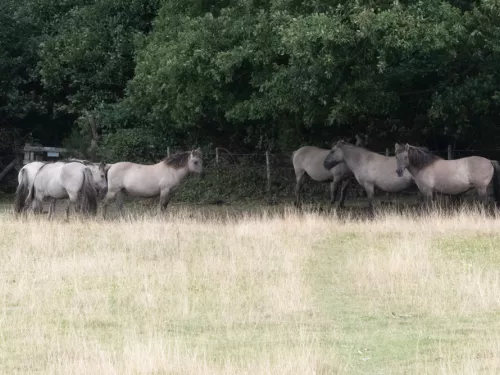
One of the main methods that seeds use to disperse themselves is through animals. Read more about the importance of this & how it happens.

In Kent, our grazing animals roam the reserves using their instincts and experience to guide them towards delicious nutritious vegetation and away from potentially toxic plants. This deep-rooted wisdom is a product of evolution and survival instincts…
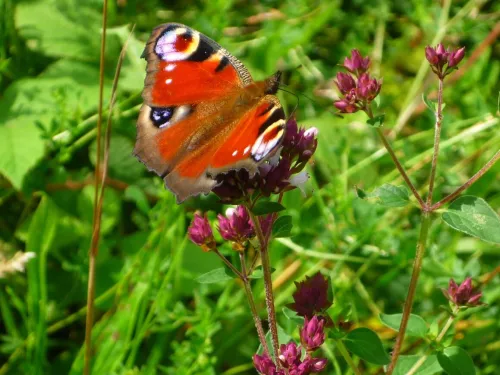
How do you restore a chalk downland? Our appeal to purchase an extension to our existing Polhill Bank nature reserve offers us a unique opportunity to restore an additional 26 acres of arable land into a rare and biodiverse habitat in Sevenoaks, Kent. But…